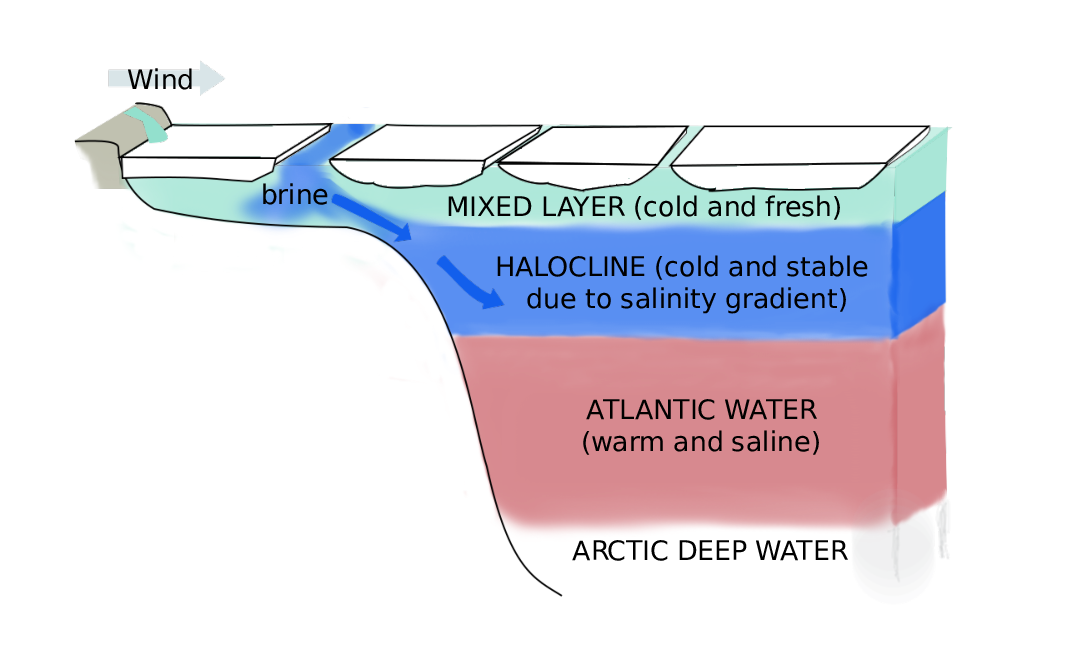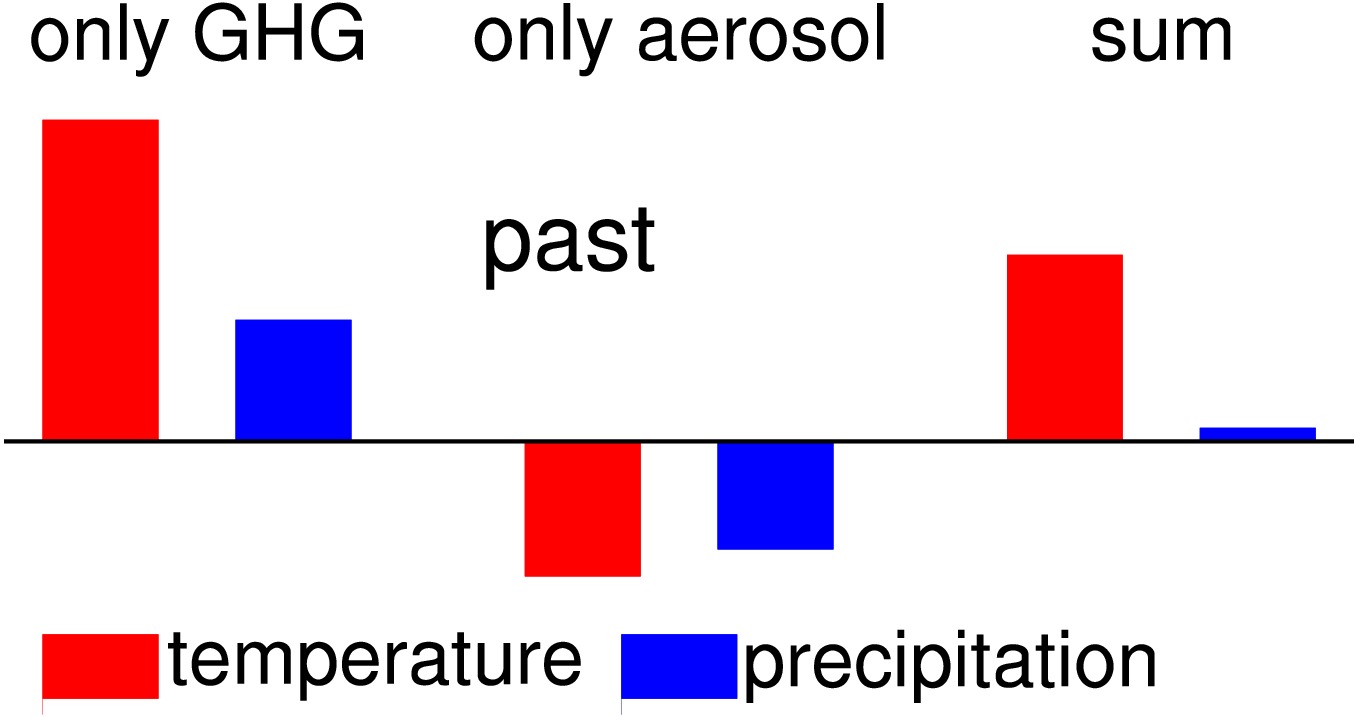Marc Salzmann
Working group Clouds and Global Climate
Arctic Ocean Paper:
Metzner, E., M. Salzmann, and R. Gerdes (2020), Arctic Ocean surface energy flux and the cold halocline in future climate projections, J. Geophys. Res. Oceans, 125, e2019JC015554, doi:10.1029/2019JC015554. http://dx.doi.org/10.1029/2019JC015554

Schematic: Formation of the cold halocline and vertical stratification of the Arctic Ocean. Adapted from Itkin et al. (2015). Source: http://dx.doi.org/10.1029/2019JC015554
Public Outreach: Read this Daily Mail Online article from 2017 to find out why comparatively slow continental average Antarctic warming is not a good argument against greenhouse gas warming. The article is based on an EGU press release.
Research highlight: Past response of global mean temperature and precipitation to anthropogenic greenhouse gases (GHG) and aerosol

Schematic: Past changes in global mean temperature and precipitation in response to anthropogenic greenhouse gas (GHG), aerosol, and all forcings. Note, however, that regionally precipitation did change and that also precipitation intensity (e.g. more heavy and less light precipitation) has already changed in many places and will continue to change due to anthropogenic forcings. For example, climate models suggest increasing total amounts of precipitation in northern Europe and decreasing total amounts of precipitation in southern Europe in the future.
Source: Salzmann, M., 2016. Global warming without global mean precipitation increase? Sci. Adv., Vol. 2, No. 6,
e1501572. DOI: 10.1126/sciadv.1501572.
See also on page 6: GEWEX research highlight: Robust response of global mean precipitation to anthropogenic aerosol
|
Institute for Meteorology
|
Last update 12 April 2021 by M. Salzmann